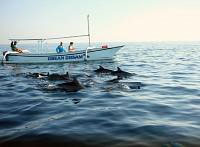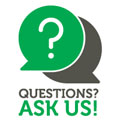
MOST VISIT PLACES OF INTERESTING
 PEJENG AREA |
The region between the Pakerisan and the Petanu Rivers, containing nearly 50 ancient temples, forms a natural replica of the Hindu-Balinese cosmos. The area, called Pejeng, naturally became the sites of some of the earliest kingdoms on Bali. One of the attractions here is Pura Penataran Sasih, which houses a giant bronze kettledrum, "Moon of Pejeng", of unknown age and origin. Also in the area is the 14th-century temple Pura Pusering Jagat, with unusual architecture, standing under a massive banyan tree. Its name means "Naval of the World". |
 NUSA DUA |
Nusa Dua is part of the Bukit Badung Peninsula in southern Bali. Conceived in the 1970?s as a self-contained resort to restrict tourism to one part of the island in order to protect local traditions, it is home to luxury hotels with swimming pools, restaurants, lush gardens and shopping arcades. Lavish buffets and dance performances make it the perfect location for visitors who wish to experience the best of Bali without straying into the heat and traffic. Known for its clean white beaches and clear waters, the surf is gentle along the northern side of the peninsula, more rugged along the south. |
JIMBARAN |
Developed only fairly recently from dry, barren land, Jimbaran is home to deluxe five-star hotels boasting private villas with individual plunge pools, butler service, and upscale restaurants. A stretch of beach formerly enjoyed the locals, who enjoyed buying fish fresh from the sea and having it grilled on the spot, has now turned into a string of open-air cafes on the same where delicious seafood can be savored under the light of a full moon.
|
 LOVINA |
West of Singaraja is Lovina, a long stretch of black sand popular with snorkelers who prefer the calm and safety of the northern sea. Far away from the hustle & bustle of southern Bali, there are no discotheques in Lovina to disturb the serenity.
|
 SINGARAJA & PUPUAN |
Singaraja was of great importance in the late 19th century, when Bali was under Dutch colonial rule. Until 1945 it was the capital of Bali, until that honor was deferred upon Denpasar, which, with a natural harbor, was deemed more appropriate. Continuing on the road from Singaraja to Pupuan is some of Bali’s most spectacular scenery. Steeply terraced rice fields plunge down the hillside, while towering above is Mount Batukau, usually covered by clouds after mid-morning. |
 TAMPAKSIRING
TAMPAKSIRING |
Sacred Tirta Empul spring at Tampak Siring was created by god Indra when he pierced the earth to create a spring of Amerta, the elixir of immortality. The bathing place was built in the 10th century. The waters are imbued with magical curative powers. People journey from all over Bali to purify themselves in the clear pools, especially pregnant women and those who have survived a long illness. After leaving a small offering of thanks to the spring’s deity, men and women go to opposite sides to bathe. |
 TANAH LOT
TANAH LOT |
Tanah Lot is an icon of Bali, more photographed than any other monuments on the island. Joined to the shore by a narrow strip of land and is one of the six most holy temples in Bali. During high tide, devotees breast the waves with offerings for the Gods. Tanah Lot was built by Nirartha Danghyang, one of the last priests arriving in Bali from Java in the 16th century. When he reached the spot where Tanah Lot now stands, he created a temple to acknowledge the gifts the gods bestowed upon the island. The best time to see Tanah Lot is in the late afternoon when the temple is silhouetted against the sky. |
NUSA LEMBONGAN & PENIDA |
Two islands off the southeast coast of Bali in the Lombok Strait are Nusa Penida and Nusa Lembongan. Not much more than limestone outcroppings, dry and barren, the local people eke out an existence farming seaweed and fishing. However, surfers, snorkelers, swimmers and divers revel in their shores, surrounded by a protective coral reef with massive crashing waves on Lembongan and the calm, clear waters of Penida. |
 SANUR
SANUR |
Sanur was developed as Bali’s first beach resort in the 1960?s. It was here that the regulation that no building in Bali should be higher than a coconut palm out of respect to the gods evolved. As the waves break over a coral reef far from the shore, only small and gentle ones reach the beach in a protected lagoon-like atmosphere. Much quieter and more sheltered than bustling Kuta, Sanur is a place for luxury hotels, serene bungalows and upscale cafes. Sanur is also the largest coastal village on Bali, its residents of the prestigious Brahman caste. |
 ULUWATU
ULUWATU |
Pura Luhur Uluwatu, one of the six holiest temples in Bali, is 25 km south of Jimbaran. The drive to Uluwatu is spectacular, with pounding surf 70 meters below limestone cliffs. It is thought that an architect-priest originally built the temple in the 11th century. It was rebuilt in the 16th century by Pedanda Wawu Rauh, a priest who believe he attained his Moksa (release from earthly desires), here. Renovations took place in the late 19th century, in 1949, and in the 1980s. Uluwatu is a breathtakingly beautiful place to be at sunset. |
| Previous Page |











